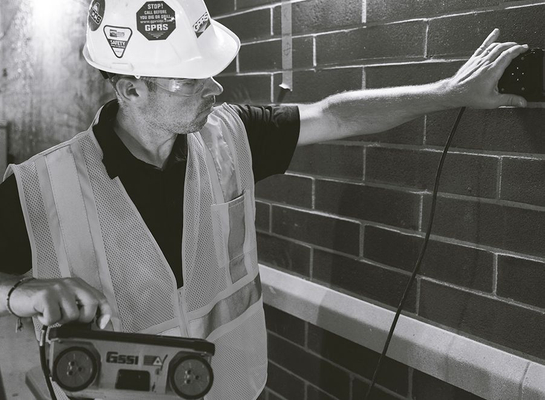
SIM stands for Subsurface Investigation Methodology. SIM is a standard operating procedure comprised of two specifications created specifically for subsurface investigations- one for underground utility locating and one for concrete scanning.
The comprehensive SIM specifications focus on a three-step approach aimed at achieving the most accurate results when performing non-destructive subsurface testing. The three critical factors that make up the specification are:
- The need for experienced technicians. Current recommendations by the American Society of Nondestructive Testing advise an 8-hour minimum training combined with 60 hours of practice using GPR equipment in order to achieve a Level 1 certification. SIM specifications advise 8 weeks of field mentoring, split by 80 hours of classroom training.
- The understanding and proper utilization of applicable technology. SIM focuses on the use of two main forms of technology when conducting subsurface investigations: the standard pipe locator, and ground penetrating radar (GPR). The use of both technologies in conjunction can more accurately confirm depth and location of a subsurface element, either in utility locating or concrete scanning applications.
- The adherence to proven methodologies. SIM combines proper training in subsurface investigation techniques and methods with advanced equipment knowledge to create a regulated system for collecting data. Technicians following SIM are required to adhere to a checklist designed to account for and overcome technological weaknesses. Following this proven protocol is recommended in order to achieve the best possible results for each site.

What are subsurface investigations?
Subsurface investigations are used to determine the location of underground utilities and obstructions, as well as to find the locations of rebar, post-tension cables, voids, etc. within concrete. Investigations are critical before performing destructive operations such as trenching, boring, or drilling in order to avoid the high risk factor of hitting buried elements. Striking a utility can lead to worker injury or loss of life, equipment damage, outages, and costly project delays. Damage to structural elements in concrete can also can injury or death, damage to equipment as well as to the concrete itself, and costly delays.
Why is a standard necessary for subsurface investigations?
“Call Before You Dig” services are a key place to start when performing subsurface investigations, but they do not cover private utilities. There is currently no industry-wide standard used in private utility locating and concrete scanning. The purpose of SIM is to establish an industry standard to act as a guide when performing such subsurface investigations. The use of SIM is expected to ensure site safety, limit damage to subsurface and structural elements, and increase contractor accountability.
Note: GPRS does not provide geophysical, geological, land surveying or engineering services. If you need such services, please contact an appropriate professional.
